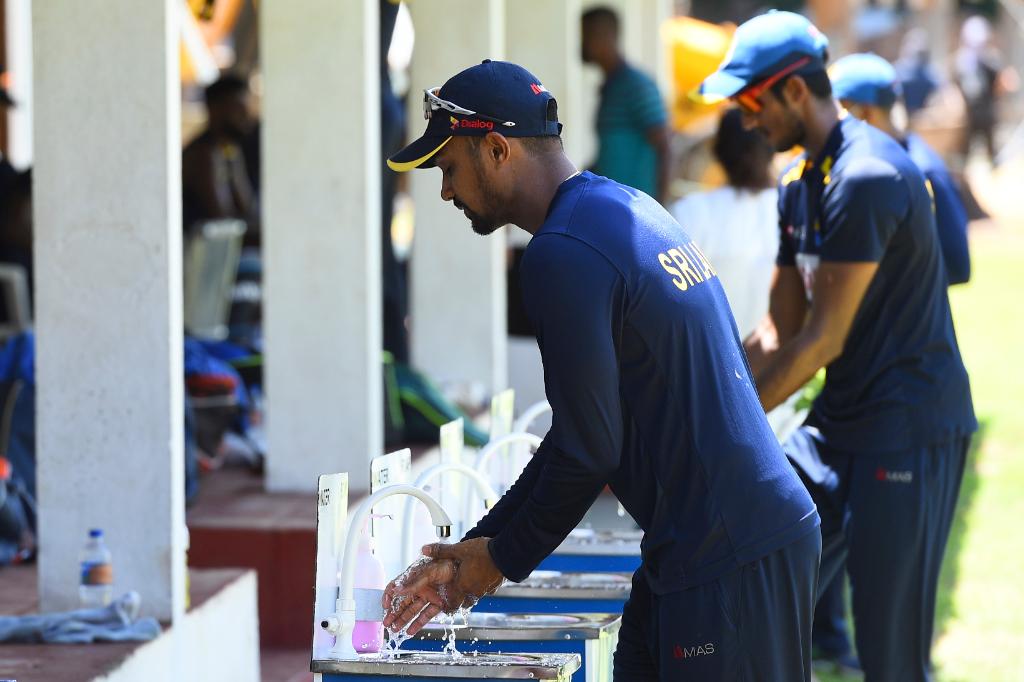How cricket might look once it resumes after COVID-19 break
COVID-19 has already impacted sports all over the world, with football becoming one of the first sports that has made a return following a long period of absence. However, people were quick to notice how the game had changed, with everything looking very different - including the celebrations.

That is exactly when I was wondering how this COVID-19 break might have an effect on cricket, a sport that is watched by millions of people. Truly, it would never be the sport it was, due to the multiple changes that could see the light the day the sport resumes, with England’s series against West Indies in July. It will start looking different right from the time the West Indian squad lands across the English sea.
First up, they would have to go through a 14-day isolation period, which would ultimately take the tour from a 20-day event to a month and a half long marathon Test series. During the isolation period, both teams have to undergo a necessary coronavirus test, with the result needing to come out negative. Once everything is set, the teams can practise, but with a twist - the players will not be allowed to be close to each other. With ICC’s recommendation of maintaining a 1.5m distance (or as directed by the respective governments) between players at all times, it would not allow a bowling coach or trainer to stand next to the bowler. Before every encounter, players will also be tested for temperature, which would almost determine their chances of playing the encounter.
On the day of the match, the players will have to maintain a safe distance from each other, walking to the middle. Starting from the first ball, the bowlers, the players must always be cautious while shining the ball. The reason for that being, the ICC, in its recommendations, has prevented the players from using saliva as a medium for shining the delivery to help maintain the ball’s shine. While all the players are enshrined with their tradition of shining the red-cherry with their saliva, they would now have to think before following it blind-folded. Now, for them, sweat remains the only friend. Well, it is not exactly the best of friends but their hands are tied now, aren't they?
It's not just that, though. Bowlers would now no longer be allowed to hand any of their personal belongings to the umpire, too - be it their sunglasses, hat, or the towel, with which they keep the ball dry. The bowlers will now have to remember all of this - even before they can hold the cherry and focus on the timber at the other end. And if they don’t get their tactics right, they can’t even get a word of advice from their skipper because of social distancing. Once they do get their tactics right and dismiss the batsman, they would have to hand over the ball to the umpire, who will be wearing a pair of gloves.
But just as they run in to celebrate a wicket with their teammates, they would have to remember that celebrating wickets in usual fashion will no longer be considered acceptable. As seen in the football world, now celebrations need to be socially safe, at a distance, with even the foot seen in play at times. Well, customarily, it will become part and parcel of the celebration list in cricket as well. On top of that, the players would have to be double-sure that they keep the distance.
The post-Covid world would also, interestingly, take away the 12th man from the picture - who would no longer be allowed on the field to serve the players their bottles of water. It would only delay the proceedings, given that the batsmen would have to walk their way to get their bottle of water. In case the ball clears the fence, bad luck to the fielders who are fielding in the deep as they would have to fetch the ball back. It might sound cruel but in case of an injury, the player might have to walk themselves back to the pavilion because of the safety guidelines; there was one such occurrence not so long ago in the Vincy T20 League.
There might be confusion in the middle but the umpires won't be allowed to get together and discuss it 'cause of social distancing. The new regulations will also reduce the number of players that could be picked for a game, and all additional staff that are usually brought along for a series might magically disappear. While these are only some guidelines issued by the ICC, its implementation surely would lead to a lot of work.
If the team does win a series, the celebrations would have to be in a similar manner to the ones that are followed in football - players standing on marked lines and grids. The biggest of the changes after COVID-19 would be, of course, the pin-drop silence in the ground, without the spectators, which the players are not used to. On top of that, every action of theirs would now be monitored using microscopes, given that there is ample technology available at disposal. If ICC does allow external objects for shining the ball, then we could see vaselines and stuff back in the cricketing shelves.
And by the time we see cricketing action back in full-flow, it might already be 2021 and the game might have changed multi-fold right in front of our eyes. On top of that, once a match is done and dusted, the players will have to think twice before shaking each other’s hands after a strenuous game of cricket. While the footballing world has already started the party, it might very well be time for cricket, too, to kick-start proceedings in a similar manner, prioritizing the safety guidelines.

Comments
Sign up or log in to your account to leave comments and reactions
0 Comments